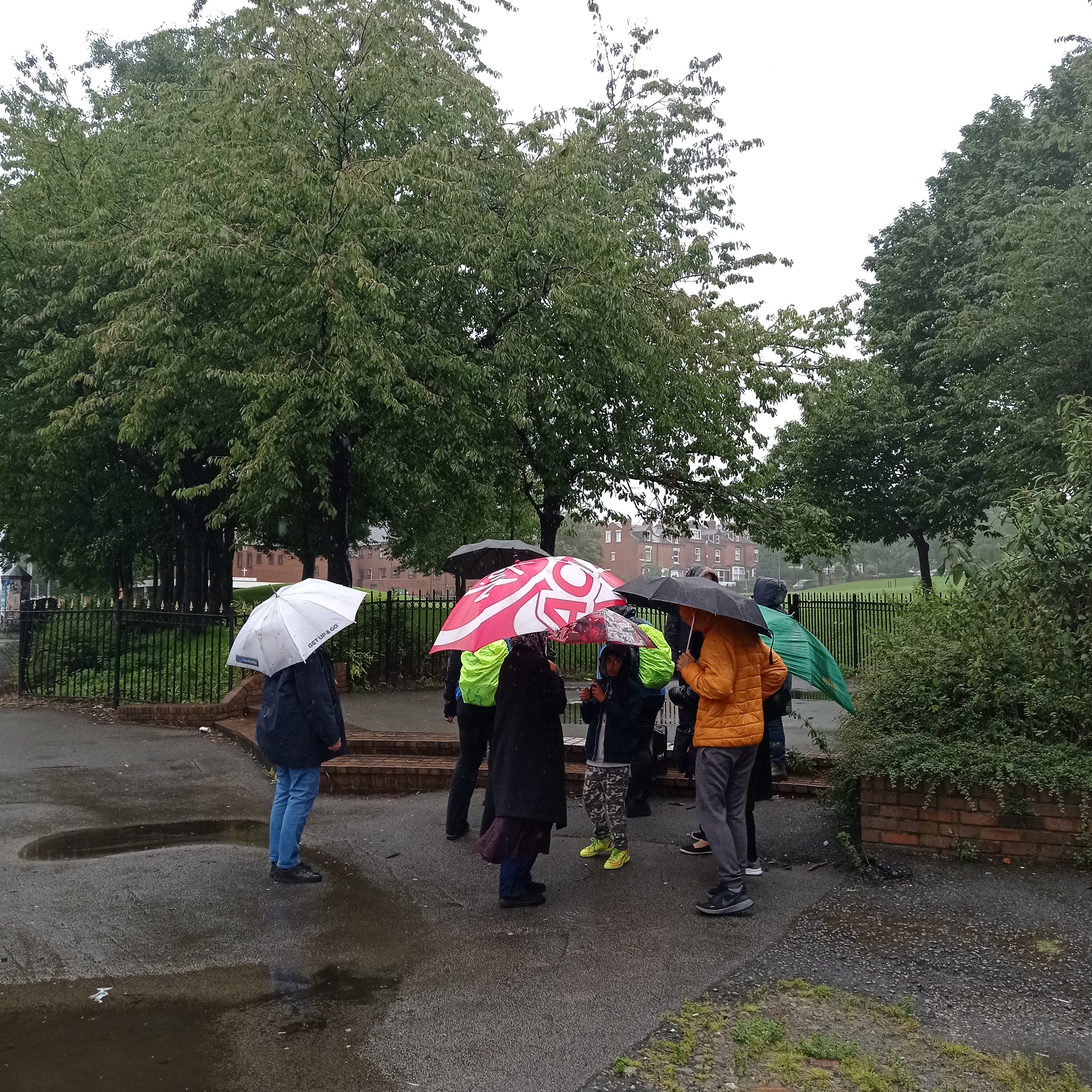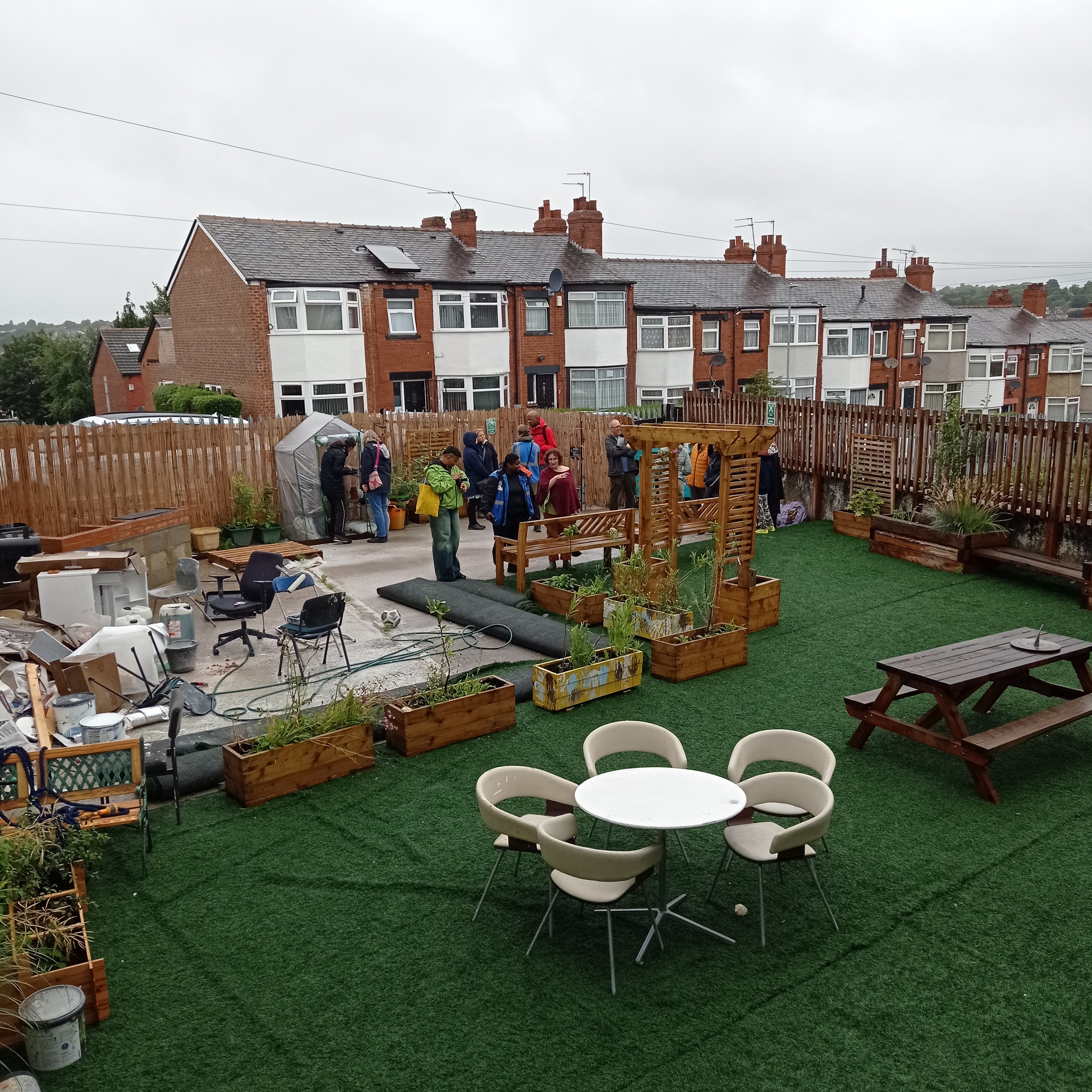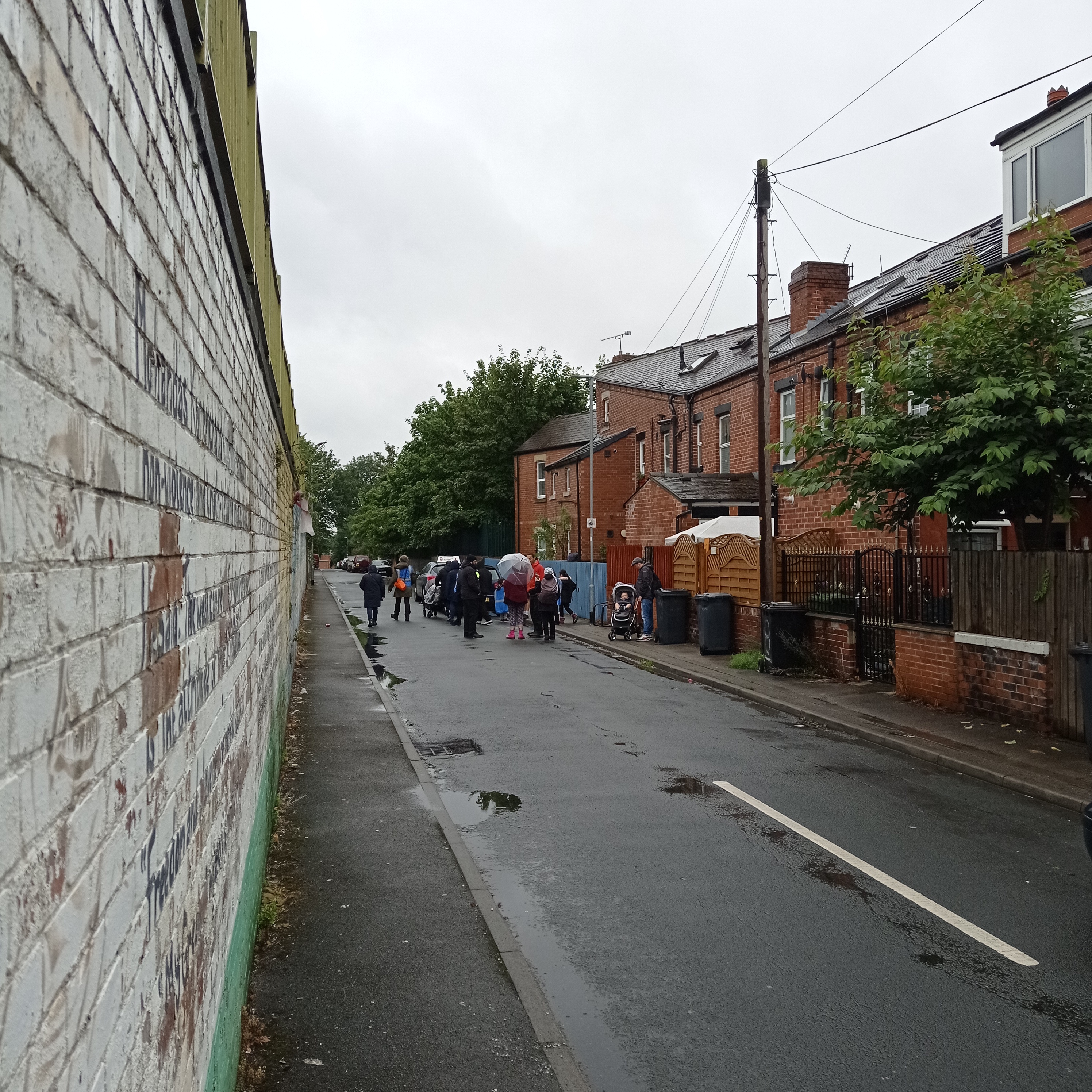Sharing Umbrellas: My Experience of a West Yorkshire Walk

I arrived in Harehills on a rainy Sunday not knowing what to expect from the West Yorkshire Walk. I had read online that the purpose was for people to talk about a place they care about and share knowledge and experiences. I was greeted by a myriad of umbrellas and welcoming faces and after brief introductions we set off on the walk.
The route began at the local church and showcased different parts of Harehills. We began walking through a park and made an early stop to look at the decorated street signs put together by the community, which highlighted the emotional connection and sense of care the people had towards their area. We made our way through the park as the rain poured and then walked past many of the residential back-to-back houses.
I had a conversation with a local resident, as we passed by a dump of rubbish on the street, where she highlighted that it was about seeing both, the positive and negative aspects of the area and community through the walk. It was less about the black and white ‘terrible’ or ‘utopian’ view of the area but about an area with flawed aspects and a community pushing to improve it. I spoke to a lady about the extreme diversity of the area with many different nationalities, which often cause divisions despite the close proximity of people. This helped me picture what it is like living there.
At the walk I met a community of people determined to make positive changes in their area and co-operate. This was the ‘Harehills Forum’, where local people had conversations about the difficulty of co-operating with the local council (who are often either not from the area or don’t seem to care) or about what was discussed at their weekly meetings, which highlighted a fundamental sense of care for the area, and the challenges they face wanting to improve it. When asking the local people whether the work they were doing for their community is political, one woman answered yes. She explained that this wasn’t in a typical party-politics sense, but more about participation, co-operating with political institutions such as the local council and trying to take away negative pre-conceptions of the area. Their hard work for the community demonstrates participation in politics through grassroots action rather than the ballot box, which signals positive change.

We also entered an area which from the exterior looked closed off and inaccessible, however after entering through a gate, a sociable area with picnic benches and nice greenery was revealed as well as a mini allotment where plants were grown. Local residents spoke about their appreciation for this area, where young people can spend time with their friends and feel safe. It was evidently an important part of their local area.
On the other hand, I could describe a park, which appeared less beneficial to the community due to the lack of seating making it inaccessible and deterring people from spending time there. Further, litter and broken glass made it unsafe for children to play there. This highlighted the range of positive and negative aspects of the area.
Throughout the walk it was special to interweave in conversations with a diverse range of people. These interactions proved vital for understanding the purpose of the walk and especially the importance of the area to local people. Memorable conversations included a woman talking about why she puts so much time into helping the community to bring people together, especially after Covid-19 and the isolation this brought. Her desire for togetherness and her determination to bring positivity to the area was admirable. Another memorable conversation was with a lady running a scheme to help and encourage those living in back-to-back houses to grow plants, revealing the difficulties for residents to access green spaces. She described the challenges of this, as form-filling was required to take part in the scheme, which results in vulnerable residents being apprehensive to take part. This showed a sense of systemic inequality, as funding is difficult to get due to misconceptions and prejudices associated with this deprived area.

I was fascinated by the method of walking, talking and eating to encourage participation by locals to talk about their community. I found it a great way to form connections and converse with a range of people. The clear structure of the walk with a planned route further added to this and created interesting talking points throughout.
The walk finished at an Indian restaurant which after the bustle, became an ideal way to end the walk, to continue conversations and eat delicious food. I sat next to a little boy who was quietly drawing a picture of the park we had just passed through, which reflected the importance of this area to him and how much younger children value the facilities in their local area.
A girl opposite me perfectly summarised the walk being all about the community and bonding. For example, “When we were standing in the rain, I shared my umbrella with the girl next to me and didn’t even know”.
Vivien De Brito is currently a year 12 student at Elliott Hudson College in South Leeds doing politics, geography, and English Literature A-levels. She has a passion for politics and hopes to study Politics and International Relations at university.
Themes, Quotes and Links from the Homes and Liveable Places online event
This is a transcription of the main points from the "How do we create decent homes and liveable places for all in West Yorkshire?" online …
Devolution as a Pressure Relief Valve for Extremist Politics
We are living in the most globally frictional political atmosphere since World War II. Despite some recognition of diversity by businesses and academia, the UK …
Devolution must chime with the everyday needs of local communities
 When we launched our collaborative book of hopeful ideas for Regional Democracy from West Yorkshire, we wanted to promote debate. If you haven't yet downloaded …
When we launched our collaborative book of hopeful ideas for Regional Democracy from West Yorkshire, we wanted to promote debate. If you haven't yet downloaded …
